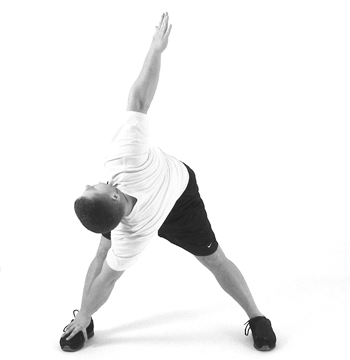 Putting money into savings is a great first step if you want to grow your pennies and improve your financial situation.
Putting money into savings is a great first step if you want to grow your pennies and improve your financial situation.But which ISA is right for you?
Basic Cash / Stocks and Shares ISA
An ISA is a simply a tax-free wrapper that protects your returns from tax.
The two main variants are ‘Cash’ ISAs and ‘Stocks and Shares’ ISAs. It is possible to have both a Cash ISA and a Stocks and Shares ISAs and funds within the two can be transferred between each other, though you have to be over 18 to have a Stocks and Shares ISA (or 16 for a cash ISA).
As the protection from tax is a valuable government benefit, there are limits to how much you can contribute into an ISA.
Every tax year — April 6 to April 5 — there is a fresh ISA allowance, currently £20,000 in 2017/18 for each individual.
 Get Flexible
Get Flexible
If you open a new ISA, you should check if it is a ‘Flexible’ ISA.
Rule changes mean that you can now withdraw money from an ISA and not lose the allowance if you return the monies in the same tax year. However, not all ISA administrators have adopted this functionality so it’s worth checking if that flexibility is available if it could be useful to you.
Cash ISA rates vary so it can be worth transferring for best rate but if you saving for the longer term consider a stocks and shares ISA for the potential for higher returns through equity-based investments.
Bonus ISA – Help To Buy
As well as the standard ISAs there are two ISAs that offer you a government bonus that will help you reach your savings goals if you’re saving for a house deposit.
The Help to Buy ISA came first, and is a type of cash ISA where up to £12,000 can be saved to qualify for the maximum 25% bonus (£3,000). You can open the account with an initial deposit of up to £1,000 and can then top up your savings by up to £200 each month. The bonus can be used to buy a a £250,000 home outside London or £450,000 if you aspire to be a Londoner. You can take money out of it for something other than a house deposit but the 25% bonus is lost.
Like a normal cash ISA you must be 16 to open one and have never owned a home here or abroad. If you are planning on saving using this type of ISA you should be aware that, perhaps annoyingly, the bonus cannot be used as part of the ‘exchange deposit’. Instead you get it after everything has completed. To be able to use the bonus as part of the deposit, you would be better getting the other bonus-paying ISA, the newer Lifetime ISA.
 Bonus ISA – Lifetime ISA (LISA)
Bonus ISA – Lifetime ISA (LISA)
Available for those aged 18 to 39 when opened, a LISA can continue to receive contributions up to 50 years old.
It’s called a Lifetime ISA because the money can be withdrawn at any time to buy a house worth up to £450,000, or the balance can be left until age 60 when it can be withdrawn tax-free like a normal ISA.
Any money taken out earlier for reasons other than a house deposit will face charges of 5% on the whole amount so you should consider these monies to be for the long term. It is possible to have a Help to Buy ISA and a LISA, though the first-time buyers’ bonus is only awarded on one of them.
The contribution limit is higher than the Help To Buy ISA, you can save up to £4,000 a year and get a 25% bonus from the Government (£1,000).
Most Lifetime ISAs are stocks and shares ISAs so you can invest in equities rather than being limited to cash. This provides more potential for growth depending on how the investments grow over time, although the values can also go down too.

Ultimately if you don’t have either you would be most likely be better opening up a Lifetime ISA as it has a bigger annual limit and can still be invested in cash if you wish. With a LISA a year needs to pass before a bonus is paid on a house so if your goal is to buy a house in the next 12 months a Help to Buy ISA might be better for speed.
Be Innovative
Another variant of the Stocks and Shares ISA is called the Innovative Finance ISA. This is an ISA that gives savers access to peer-to-peer lending platforms or invest in companies through crowdfunding websites. You could get a better return than available from a bank, but they are riskier. It’s also important to know the money is not covered by the Financial Services Compensation Scheme if the borrower defaults or the provider collapses.
What about Junior?
Those with children born after 3 January 2011 can save for their future  using a Junior ISA where up to £4,128 tax-free each year for their child for the 2017/18 tax year. The account becomes a basic ISA once they turn 18 meaning they access the money then, but children can get control of the money at 16. Interestingly, children aged 16 to 18 can have a Junior Isa as well as a standard ISA and they have separate allowances so lucky teens can maximise their savings if they have generous family memories or a well paid job!
using a Junior ISA where up to £4,128 tax-free each year for their child for the 2017/18 tax year. The account becomes a basic ISA once they turn 18 meaning they access the money then, but children can get control of the money at 16. Interestingly, children aged 16 to 18 can have a Junior Isa as well as a standard ISA and they have separate allowances so lucky teens can maximise their savings if they have generous family memories or a well paid job!
How Many ISAs can you have?
You can open a new cash ISA or stocks and shares ISA each year , and contribute to any ISA each year as long as the total amount does not exceed the annual limit of £20,000. There are however, a few other points to consider so for more information on ISAs read this helpful ISA summary.
Happy Saving!
You must log in to post a comment.